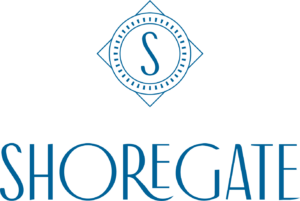
Greater Bay Shore coverage is funded in part by Shoregate, now leasing brand-new premium apartment homes in the heart of Bay Shore. Click here to schedule a tour.
“No Taxation without representation” is one of the founding principles of the United States.
But does that truly apply in the Town of Islip?
This year’s operating budget for the town is $228.8 million dollars. The budget is funded from an average of $500 dollars a year from each homeowner within the town.
But is there fair and balanced representation within local government for the taxes collected?
Currently, the town’s legislative body is made up of four council people and the supervisor.
Supervisor Angie Carpenter resides in West Islip, Councilwoman Trish Bergin resides in East Islip, Councilman John Cochrane (born in Bay Shore) lives in Brightwaters, Councilwoman Mary Kate Mullen resides in Bayport, and James O’ Connor is in Great River.
These communities, where members of the legislative body reside, make up 55,774 people. The total population of Islip Township is 335,543 people.
Bay Shore’s population alone is 26,337, Central Islip’s is 34,450, and Brentwood’s population is 60, 664.
Outside of John Cochrane representing Bay Shore, where he also owns a business, where is the representation for these other densely populated communities?
In the Town of Islip, the legislative body was established around the mid-18th century with an estimated population of 600 people.
The electoral system for the town became the at-large system, which is majority vote — as compared to having an election for a representative in a designated council district.
For smaller populations in an agricultural community, this system made sense, but centuries later, 24 hamlets have been established — all with different needs.
For decades, representation of all these hamlets has come from people living south of Sunrise Highway, leaving the other 279,769 people and their communities without a voice — and preventing a council person from being held accountable for bad policies.
In the 1997 lawsuit Goosby v. Town of Hempstead, a federal judge ruled that the at-Large
system for the Town of Hempstead violated the 14th Amendment (No state shall make or enforce a law which abridge the privileges of citizens.) and 15th Amendment (Rights for Citizens to vote shall not be denied).
Following the decision, the town created council districts based on population and had a
council person represent the designated district.
Ten years later, good government groups within Islip Town put electoral reform through drawing of districts on the ballot. Prior to the election, a storm of misinformation about council districts, led to a defeat for the political reform.
The demographics, tax base and future layout of suburbia have changed in Islip Town, but its
electoral system has been idle for nearly 300 hundred years.
Democratizing the electoral system can only create a more enduring and lucrative community that holds officials accountable for tax money spent. But most of all reform will be aligned with our founding American principle “No Taxation Without Representation.”
From the NYT (2002): Council-districts referendum wins narrowly in Brookhaven
























